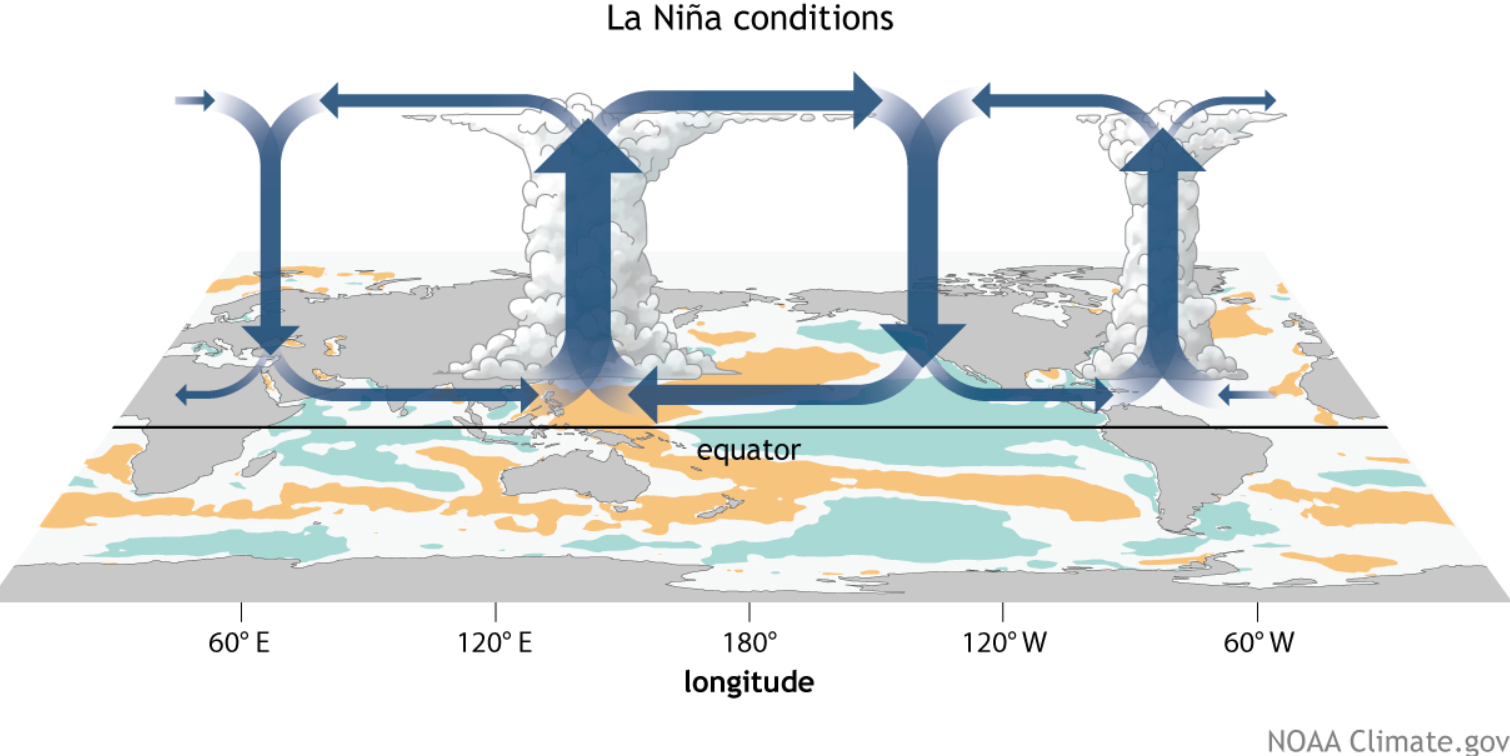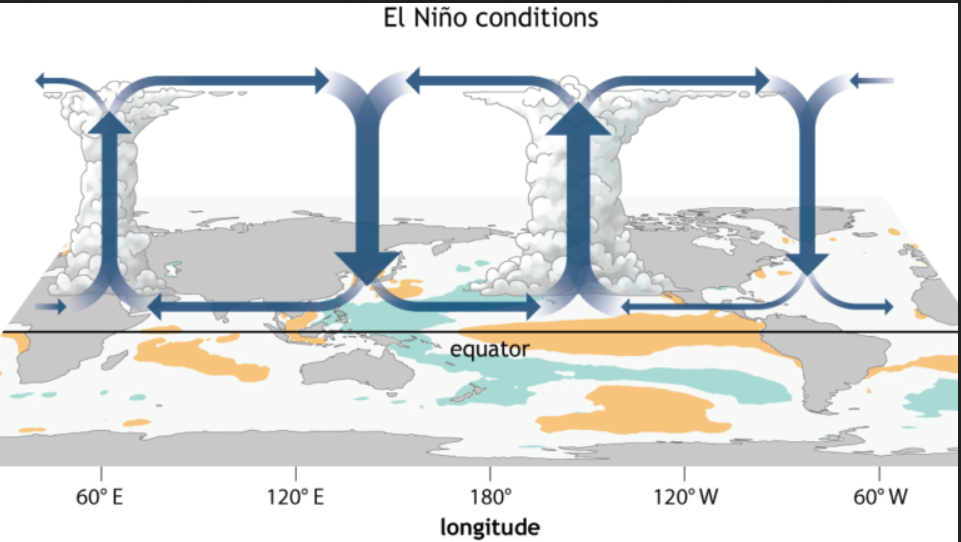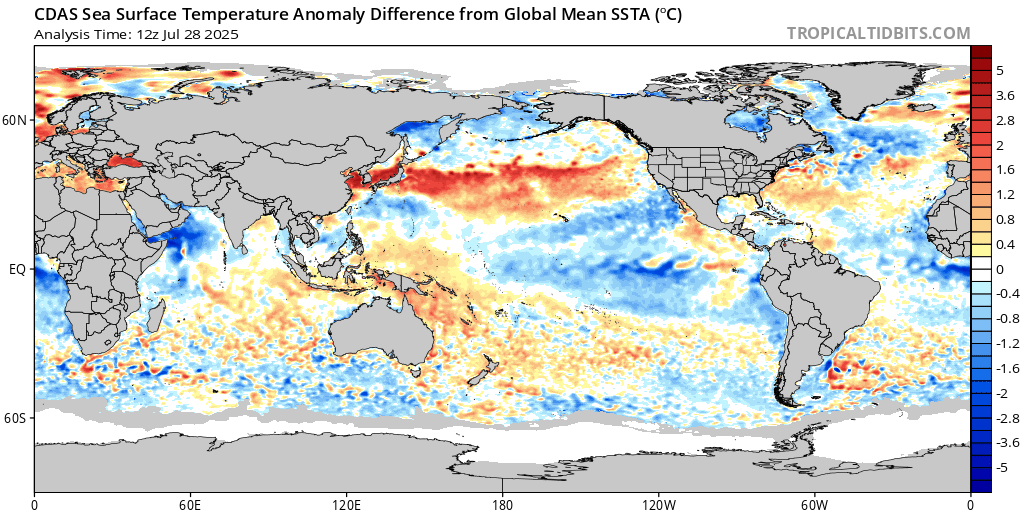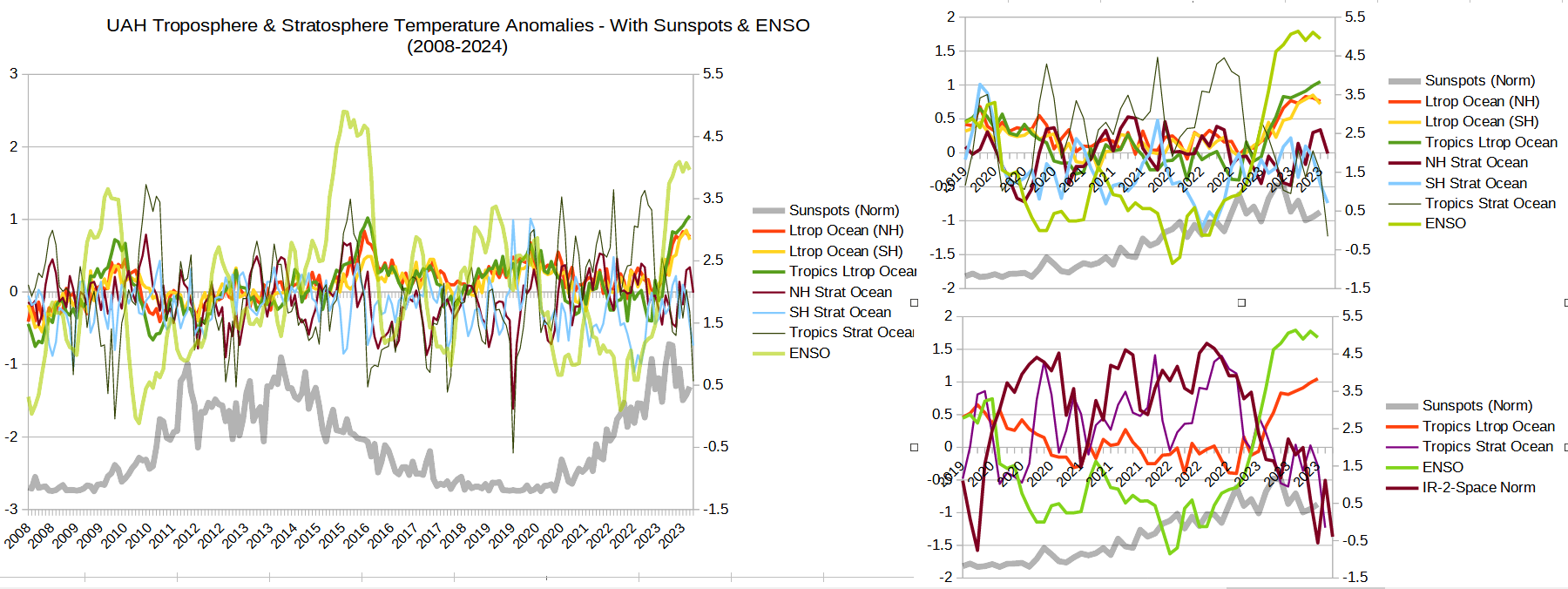|
|
Post by missouriboy on Feb 28, 2024 1:23:45 GMT
Perhaps too simplistic, but ...
La Nina conditions at the start of each new solar cycle seemingly place the descending limb of a Walker Cell over the western Indian Ocean. This drives warm Indian Ocean surface water eastward (a negative IOD) ... where it spills eastward into the Western Warm Pool ... and progresses eastward across the Equatorial Pacific as a gravity wave which fuels an El Nino on the front end of the new solar cycle.
  |
|
|
|
Post by missouriboy on Mar 1, 2024 2:39:30 GMT
More negative IOD in the Indian Ocean?  |
|
|
|
Post by ratty on Mar 1, 2024 6:03:00 GMT
Bom & Ratty say neutral.
|
|
|
|
Post by missouriboy on Mar 4, 2024 0:43:12 GMT
Perhaps too simplistic, but ...
La Nina conditions at the start of each new solar cycle seemingly place the descending limb of a Walker Cell over the western Indian Ocean. This drives warm Indian Ocean surface water eastward (a negative IOD) ... where it spills eastward into the Western Warm Pool ... and progresses eastward across the Equatorial Pacific as a gravity wave which fuels an El Nino on the front end of the new solar cycle.
  I got lucky and found and old set of Jakarta Indonesia monthly surface pressures and can now link them to IOD and SOI. Low pressure at Jakarta occurs consistently at the start of solar cycles and negative IOD events. See chart below. Unfortunately, the data set only goes to about 1985. But we have our Indian Ocean warm water input mechanism.
 |
|
|
|
Post by Sigurdur on Mar 15, 2024 18:25:27 GMT
|
|
|
|
Post by missouriboy on Mar 15, 2024 21:27:46 GMT
The Woke Minion are not going to like this one little bit.
|
|
|
|
Post by duwayne on Mar 18, 2024 14:25:58 GMT
The BOM weekly ENSO data seems to be no longer updated. Is the interest in the ocean cycle declining? No AMO data. No MVENSO data. NO BOM weekly ENSO data
|
|
|
|
Post by missouriboy on Mar 18, 2024 16:14:57 GMT
The BOM weekly ENSO data seems to be no longer updated. Is the interest in the ocean cycle declining? No AMO data. No MVENSO data. NO BOM weekly ENSO data Out of sight. Out of mind. Meanwhile, the party doctrine, press-relayed messages continue to stress the longer-term catastrophic party message. |
|
|
|
Post by ratty on Mar 19, 2024 0:36:28 GMT
The BOM weekly ENSO data seems to be no longer updated. Is the interest in the ocean cycle declining? No AMO data. No MVENSO data. NO BOM weekly ENSO data Is this page of any use: SOI Since 1876 |
|
|
|
Post by nonentropic on Mar 19, 2024 1:32:51 GMT
points to neutral at this time.
|
|
|
|
Post by nonentropic on Mar 19, 2024 1:34:17 GMT
|
|
|
|
Post by missouriboy on Mar 19, 2024 4:15:58 GMT
I think we would need additional "inside" information to figure out "the why" of a dataset disappearance. Three in short order raises eyebrows. But having "nested" with the line agencies at various times, you learn to follow "the money", who's in with who and for how long, and who and for what reason takes their place ... etc, etc. As for weekly ENSO ... they always seemed to track the monthly aggregate. So maybe someone else grabbed the pot of gold when someone retired or fell out of favor. The AMO was a long running favorite, so that is a mystery and there is not really a substitute for it. Anyone know of one? A retirement was mentioned related to input data. Did someone else grab the gold? or were other things involved?
Same story could be true for ENSO MEI, except there is a twist. MEI had consistently tracked rather close to standard temp-only ENSO ... until the last year !!! When SC25 tracked dramatically lower than temp-only ENSO for past cycles. I don't have the "recipe", so I can't immediately say WHY. Perhaps North Pacific pressures. Did someone NOT LIKE THAT RESULT? Or was there something else. Since the datasets were produced with public money, and their loss represents the loss of an investment, I think someone owes an explanation! Does anyone suppose we will get one? Was Jerry right? |
|
|
|
Post by duwayne on Mar 19, 2024 20:33:21 GMT
The BOM weekly ENSO data seems to be no longer updated. Is the interest in the ocean cycle declining? No AMO data. No MVENSO data. NO BOM weekly ENSO data Is this page of any use: SOI Since 1876Perfect! I used a link found on your page which led to another link which yielded the BOM weely ENSO data in the same format as the one that was discontinued on my old link.
Thanks Ratty.
If the Current ENSO continues to follow the general path of 1998, 2010,and 2019, a La Nina is not far away and we may be in La Nina territory for a couple of years.
|
|
|
|
Post by missouriboy on Mar 19, 2024 20:36:19 GMT
UAH Stratospheric temp anomalies for Feb. 2024 are in (Lower Trop not yet). Two right charts show the SC25 progression. Lower right chart shows that, until El Nino kicked in, Lower Troposphere temp anomalies over the tropical oceans declined by 0.5C ... and then rose by 1C with ENSO ... which is now turning downward as ENSO starts to fade. Stratospheric temp anomalies over the tropical oceans have dropped by 1C in the last couple pf months as IR-2-Spce values in the mid-Pacific Ocean, which were very high preceding ENSO, crashed as ENSO set in. Suggesting that IR-2 Space raises Lower Stratosphere temps as the lower Troposphere anomalies over the tropical oceans cool. Assumptions are that lower cloud cover without El Nino facilltates this upward transfer ... until El Nino cloud cover caps it. The extensive La Nina conditions in the first part of SC25 resulted in large temp increases in the Lower Stratosphere. If we get a long, deep La Nina on the back side of SC25, there could be some dramatic cooling in the lower troposphere.  |
|
|
|
Post by neilhamp on Mar 20, 2024 10:43:54 GMT
|
|